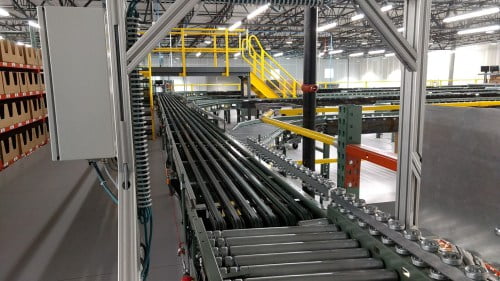Published October 12, 2023
If the last few years have taught us anything, it’s that disruptions are the new normal. From geopolitical tensions and natural disasters to labor strikes and space shortages, today’s supply chains must be ready to face—and overcome—a myriad of ongoing challenges. Instead of simply reacting to disruptions as they occur, companies must take a proactive approach by making a full supply chain transformation of their operations to minimize risk and ensure they are capable of meeting constantly changing demands.
While it’s impossible to predict and prevent all disruptions, below are three key areas companies must transform to increase resilience and future-proof their supply chain operations.
Supply Chain Transformation Through Network Optimization
From rising warehouse rents to a slowdown in sales, many companies are now looking to streamline their distribution networks. While past network designs may have mainly focused on reducing costs, today’s supply chains must strike the right balance between cost optimization, service levels and flexibility to remain competitive in the future. Performing a network analysis enables companies to evaluate their current operations and future needs and determine the optimal network design to minimize risk and accommodate changing demands. Below are three factors to consider when embarking on a network optimization project:
- Current Facility Utilization. Before redesigning your supply chain network, it is important to first review your current warehouse operations to identify any potential opportunities to increase efficiency or capacity. When conducting a warehouse assessment, companies should evaluate the space and layout, flows, material handling equipment and processes to determine if there are any areas for improvement or if expansion is necessary to support evolving needs.
- Inventory and Order Profiles and Volumes. Have you recently experienced a change in order and SKU profiles and volumes? As consumers continue to shift shopping habits—and many retailers are still stuck with excess stock from last year—performing a network analysis can help companies identify the right inventory levels and locations to meet customer demand while minimizing costs and delivery times.
- Distribution and Fulfillment Strategies and Locations. While many companies may have previously relied on a single distribution center to handle all of their distribution operations, today’s disruptive environment requires retailers to expand their logistics network to remain agile, mitigate risk and meet growing customer expectations. Forward-thinking companies are exploring a variety of new distribution and fulfillment strategies, from leveraging their retail store infrastructure to utilizing cross-border logistics to reduce costs and improve service levels.
- Labor Availability and Rates. In addition to real estate and transportation considerations, companies must also look at labor availability and costs when evaluating facility locations. These rates can vary widely based on a number of factors, including labor unions, right-to-work laws and proximity to competitors.
Environmental, Social and Governance (ESG) Initiatives
Another critical area for supply chain transformation is environmental, social and governance (ESG) performance. In addition to representing the majority of a company’s operating costs, the supply chain often accounts for more than 90% of an organization’s greenhouse gas emissions, according to the U.S. Environmental Protection Agency (EPA). While regulatory requirements and risk mitigation remain top drivers, many companies are now also realizing the benefits ESG has on the bottom line. A recent study by the IBM Institute of Business Value found that companies leading in ESG performance are 43% more likely to outperform on profitability. According to the research, roughly two thirds of consumers say that environmental sustainability (68%) and social responsibility (65%) are very or extremely important to them, and nearly half have paid a premium price for environmentally sustainable or socially responsible products within the last year.
As customers, stakeholders and regulators are becoming increasingly concerned with sustainability and social responsibility, ESG is no longer a nice-to-have but now a necessity for supply chains. Companies must start implementing ESG practices today to avoid reputational, legal and financial consequences in the future.
Digital Technologies
Just as warehouse automation has been vital in helping companies overcome a variety of labor and operational challenges, utilizing innovative digital technologies is required to ensure a successful supply chain transformation. According to the 2023 MHI Annual Industry Report, 74% of companies are planning to increase their investment in supply chain technology and digital solutions such as artificial intelligence (AI), the Internet of Things (IoT) and advanced analytics, among others.
In addition to supporting network optimization and ESG efforts, advanced digital technologies increase efficiency, cost savings and customer satisfaction by enabling companies to:
- Improve inventory management and demand forecasting to avoid stockouts and surplus
- Optimize transportation routes to minimize delivery times, costs and environmental impact
- Access real-time data and end-to-end visibility to identify potential bottlenecks or disruptions and take proactive measures
- Track products across the entire supply chain to ensure traceability and transparency
- Monitor systems and predict maintenance needs to prevent equipment failure and unnecessary downtime
- Automate repetitive, labor-intensive tasks to streamline warehouse operations and increase worker productivity and safety
- Unlock valuable analytics and insights to enable data-driven decision-making
There is no one-size-fits-all strategy for supply chain transformation, nor should it be conducted in siloes. A comprehensive, customized solution based on your unique business requirements and goals is required to ensure success and remain competitive in this ever-changing environment. Contact us today to learn how to get started on your supply chain transformation.



